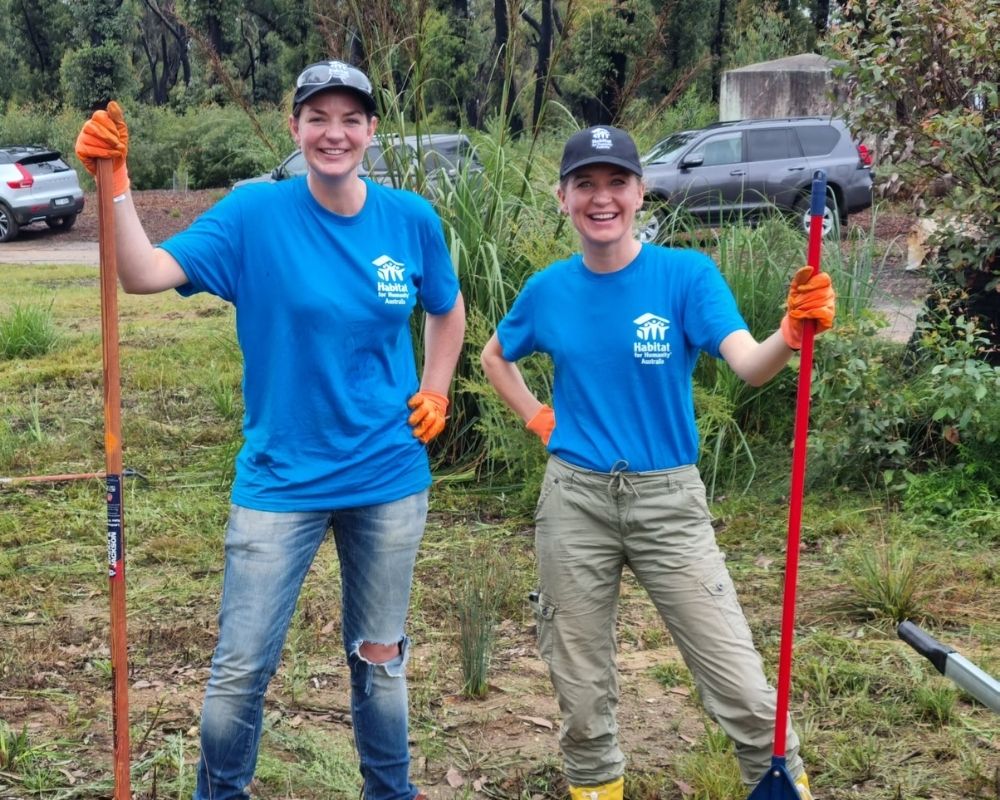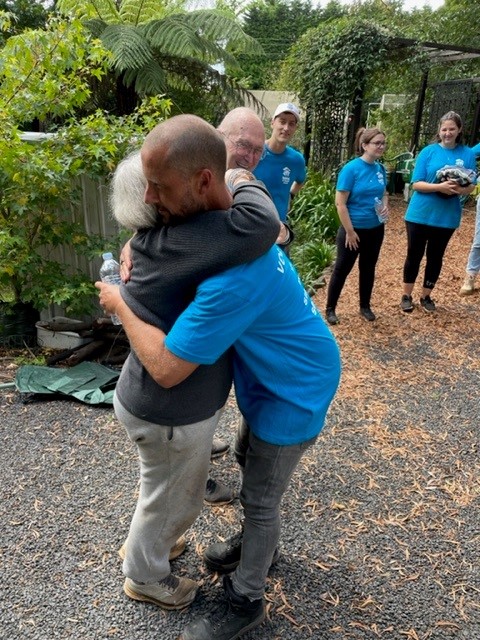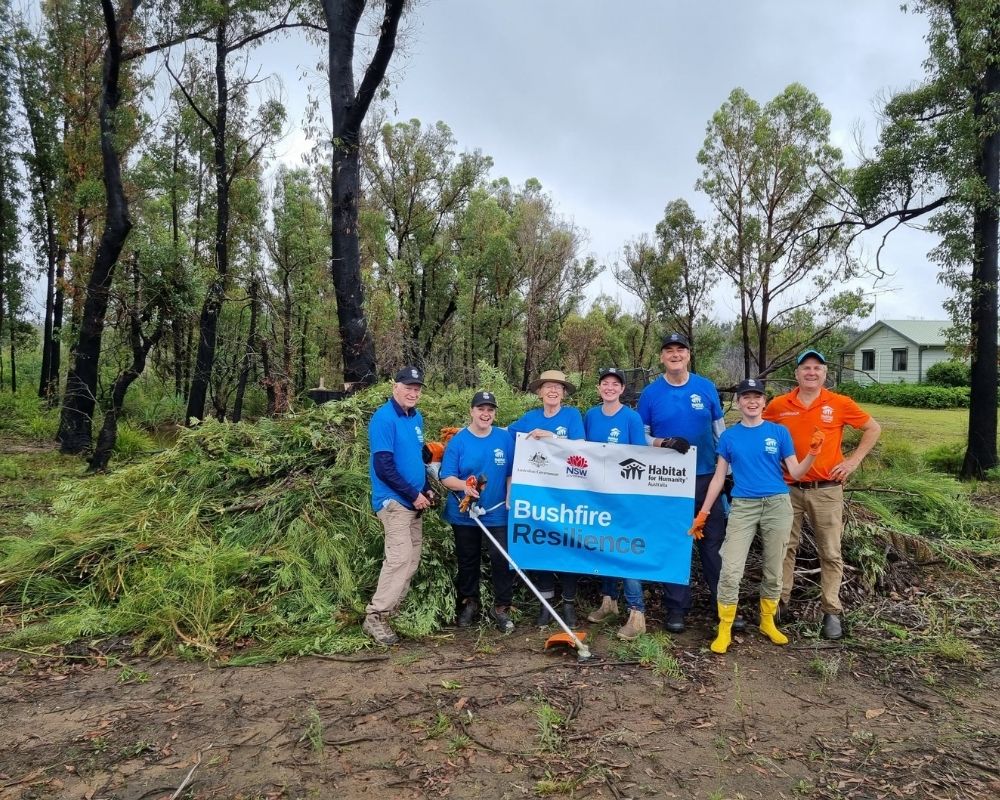National Volunteer Week
In partnership with Green and Simple
Guest Blog By Jenny Ringland
Did you know each year 1 million Australians volunteer their time to different causes and that 400,000 of those volunteers work directly in emergency response and relief? Fires, floods and the pandemic have given us a renewed appreciation for the vital work of volunteers, whether it’s one day a year, or a regular monthly commitment.
“The aftermath and the impact of disasters are felt long after an event has taken place. Volunteers provide support to those affected by crises, including in mental health and suicide prevention services, which typically experience a surge in demand during and after disasters,” says CEO of Volunteering Australia Mark Pearce.

From May 16-May 22 is National Volunteer Week and this year’s theme is, Better Together, it’s the belief that together, through volunteering it’s possible to change communities for the better.
One organisation celebrating is Habitat for Humanity Australia, which thanks to the support of its volunteers, partners and donors has been able to support Australian families recovering from the 2019/2020 bushfires with a renewed and critical focus on helping them prepare for future bushfires.
“The thing with disaster resilience is it doesn’t just stop when the disaster’s finished. Disaster resilience is what we in Australia will have to think about more and more and for the rest of our lifetimes and those of our children and our children’s children, because climate change means we are going to get more prone to disasters,’’ says Habitat for Humanity Australia Bushfire Resilience Program Manager Philip Sen.
“Disaster resilience goes on forever. It’s very hard to think about resilience, for example, bush fire resilience, when it’s raining. What is harder is over the last two years, it’s become more of a memory. Flooding and COVID-19 are front of mind, but we know bush fires are a constant feature of the landscape, they will happen again.”
Ironically, the amount of rain Australia and specifically the Blue Mountains and Southern Highlands in NSW has experienced in the two years since the bushfires has resulted in an incredible amount of vegetation growth.

“Some of that vegetation is native Indigenous plants that naturally have sprung back half of the bush fires, bigger than before. Some of it is weeds and non-native plants, and the effect is that there’s just loads of stuff in the bush and around people’s houses that has to be taken care of,’’ says Philip.
“There are many people, particularly older people and people with disabilities who are still struggling to get back on their feet after the pandemic and the bushfires who can’t manage the growth.’’
Community first volunteering
Through its Bushfire Resilience Program, Habitat for Humanity Australia aims to help prepare hundreds of locations in the greater Blue Mountains and Southern Highlands for the risk of fire, via community training sessions, information resources, and other support to community groups to continue bushfire preparation work well into the future.
“One of the first principles of bushfire resilience is to reduce the fuel around your home. Anything that can burn, anything that will dry out and burn is fuel for a bushfire. If there’s a catastrophic bushfire, there’s not much you can do, but if you’re prepared, you can at least slow things down, give yourself a better chance of coming back to your property and finding it still there,’’ Philip says.
“We’re trying to help those people who don’t really have the capacity to look after their properties themselves anymore, whether that’s because they’ve become older and less physically capable or whether they’re facing other challenges. We are helping them get back on top of things, because people can see the amount of vegetation around them and they’re becoming increasingly nervous knowing all it will take is another dry summer.’’
Philip, who is a former United Nations communications and public relations official, specialising in disaster resilience, says volunteers are the key to creating resilience within a community.
“A community that’s working together is stronger together. It is definitely true of towns and villages hit by the black summer bushfires, people are banding together, trying to look out for one another. They’re looking out for more vulnerable people and that’s one of the things we are seeking to support in as many ways as we can,’’ he says.
“It’s also important to remember the Rural Fire Service, the heroes of the day two years ago during the bushfires, who are also predominantly volunteers, it’s not their job to do long term resilience. It’s their job to try and stop the bushfires getting towards towns and villages. So whether it’s tackling an actual bushfire when it occurs, or preparing for the risk or preparing for the next time, it’s all about volunteers.”

A need for volunteers
There will never not be a need for volunteers in communities affected by fire and flood and we know it’s these communities that will always be the most vulnerable to climate change.
Philip says when you volunteer to help one person or family, you inadvertently help the entire community.
“The thing that always gets me is so far in the last few months, every single time we’ve gone to somebody’s home and just helped clear away the vegetation, helped tidy up and make sure it’s more resilient to fire, the amount of stress and worry that’s lifted from that person is incredible, Philip says.
“You can see the burden lifting. It’s a cliche, but it is quite amazing. People will brighten up and the thanks that they give us, the volunteer teams. There’s been tears and there’s been hugs and all that kind of stuff, because these are often people who’ve either seen a bush fire up close once or twice or three times in their lives, and they know what the risk is. And they know that they’re no longer able to keep themselves safe.”
Want to volunteer for the Habitat for Humanity bushfire resilience program? Find out more here about our Bushfire Resilience Program here.


